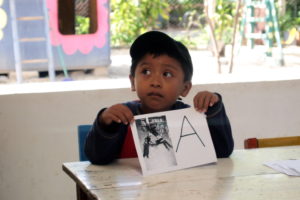
The demand for dual-language learning programs are on the rise throughout the United States, but Latino families are hesitant to enroll their children due to fear that it will hinder their children’s ability in English.
“It’s a common misconception,” said Vanessa Bertelli, Executive Director and co-founder of DC Language Immersion Project. “Some Latino families believe that if they want their children to learn English, they shouldn’t be putting them in a Spanish language immersion or dual language programs. It’s actually the opposite,” she added.
Studies show that dual language students are testing 14 points higher than their counterparts at traditional schools regardless of their ethnicity or socioeconomic status. According to Tyler Elementary in Washington D.C., “dual language students develop flexibility in thinking through problem solving, conceptualizing, and reasoning in two languages.”
Bertelli argues that for Latinos there is strength to preserving language and culture through dual language programs; a major pro to these programs is that the students learn from each other, and not just one-way from the instructor. In American native families, the demand for dual programs has increased at a significant rate.
“Most commonly, the reason is that [American] families want to make sure their kids get that exposure to the diversity that comes with dual language,” said Dahlia Aguilar, principal of Mundo Verde, a dual-language school in Washington D.C.
Immersion language programs originated in areas where educators felt that more than one language was necessary for children’s future economic and social prosperity. Educators say native speakers of both languages are deemed necessary for a successful outcome of these programs overall.

Recent Comments